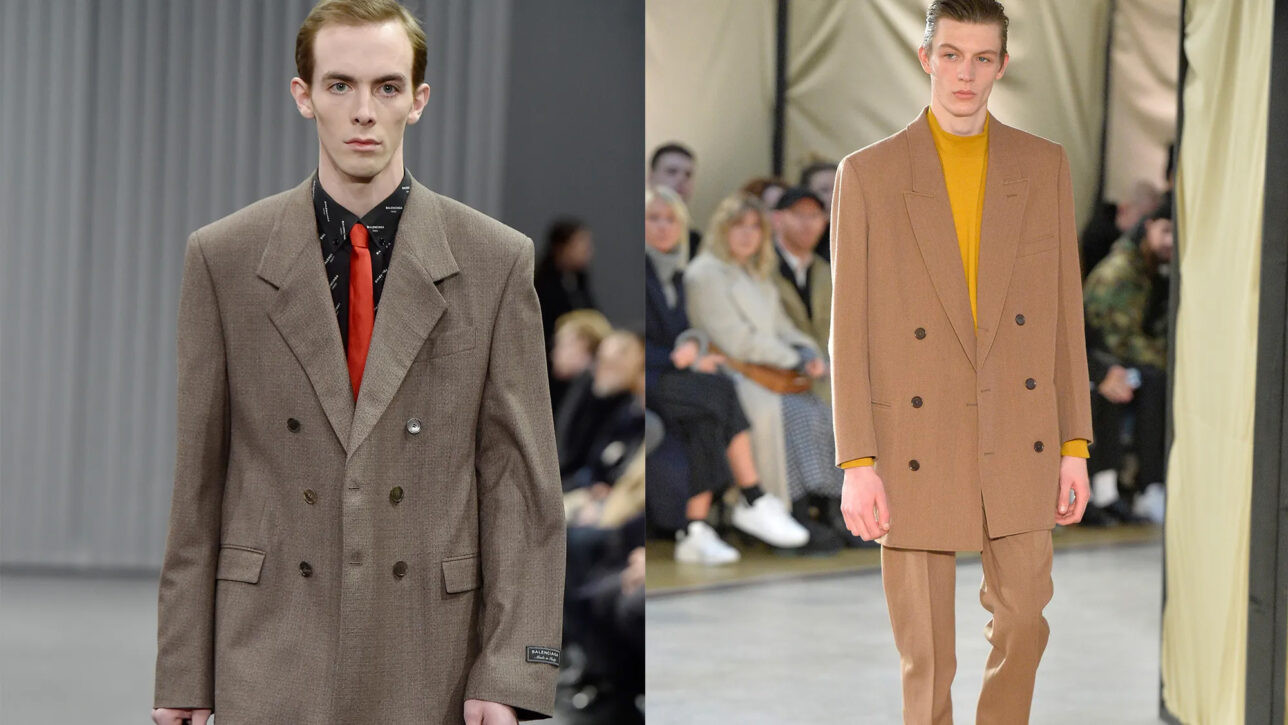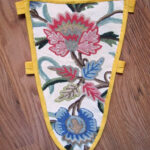The oversized trend has undeniably swept through the fashion landscape in recent years. From city streets to social media feeds, the prevalence of big, baggy, and generously cut clothing is hard to ignore. While initially prominent in streetwear, Oversized Fashion has now permeated diverse style sectors, including high fashion, casual wear, sportswear, and even classic menswear, influencing silhouettes and fits towards looser and more voluminous designs.
Here’s a comprehensive look into the oversized clothing trend:
- Defining the oversized clothing trend
- Exploring the reasons behind its popularity
- Examining the flattering aspects of oversized clothing
- Our perspective on the oversized trend
What Exactly Is Oversized Fashion?
Oversized fashion is more nuanced than simply wearing clothes several sizes too large. It’s a deliberate style where garments are designed and worn to be significantly roomier than the wearer’s standard fit. This intentional design ensures that while the clothing is voluminous, it maintains a proportional aesthetic, avoiding issues like ill-fitting waistlines or excessively long sleeves that are common when simply sizing up.
This isn’t the first time oversized silhouettes have graced the fashion world. In the early 20th century, a shift occurred as young women moved away from restrictive corsets in favor of looser, more flowing dresses, signaling an early embrace of comfort and volume. Later, the 1970s hippie movement in the US championed looser clothing as part of its counter-culture expression, with individuals often crafting their own garments outside of mainstream fashion norms.
[The oversized trend gained significant traction during the 1980s and 1990s hip-hop era.] Figures like Snoop Dogg, Ice Cube, and Tupac became style icons, popularizing oversized t-shirts and baggy jeans. The global explosion of rap music during this period propelled this style into mainstream youth culture, making it a common sight in urban landscapes worldwide.
Today, oversized fashion transcends specific subcultures and is embraced across demographics and geographies. Unlike fleeting trends, it shows considerable staying power, suggesting a deeper shift in fashion preferences.
The Rise of Oversized Clothing: Why Is It Trending?
The ascent of oversized fashion may seem sudden, but several factors have contributed to its sustained growth.
The Comfort Factor: Post-Pandemic Priorities
The COVID-19 pandemic significantly altered lifestyle norms, with lockdowns leading to a greater emphasis on home comfort. As remote work and home-based leisure activities became prevalent, comfortable clothing took precedence. This shift in priorities persisted as restrictions eased, with comfort becoming a key consideration in clothing choices. People began seeking styles that offered freedom of movement, adaptability across different body types, and, most importantly, enhanced comfort.
Body Positivity and Inclusivity
With the pervasive influence of social media over the last decade and a half, discussions around body image and inclusivity have intensified. Oversized clothing is seen by some as a response to body objectification, offering a way to navigate societal pressures related to body image. It can be viewed both as a means of personal comfort for those self-conscious about their bodies and as a liberating fashion choice that prioritizes comfort over form-fitting styles.
Gender-Neutral Fashion
Oversized clothing also plays a role in blurring traditional gender lines within fashion, promoting a gender-neutral aesthetic. This aligns with broader societal movements towards gender neutrality, which are increasingly visible in education, media, and consumer culture. The fluidity of oversized styles allows for more versatile and less gender-prescriptive fashion choices.
While these are key factors, the fundamental appeal of comfort in clothing is timeless. The pandemic may have acted as a recent catalyst, accelerating the trend, but the desire for comfortable and practical fashion has always been present.
This trend has also subtly reshaped classic menswear. While classic styles are often seen as unchanging, they are not immune to broader fashion movements. Currently, a more relaxed fit is favored in classic menswear circles. Compared to a few years ago, contemporary suits feature softer tailoring, wider lapels, and a generally more generous cut.
Is Oversized Fashion Flattering?
The question of whether oversized clothing is flattering is inherently subjective, tied to personal taste and cultural norms. Objectively, clothing that fits well is generally considered to enhance the wearer’s body shape. Garments that are excessively loose or tight can distort natural body lines, leading to an unbalanced or disproportionate appearance. This is why no single fit universally suits all body types; what flatters one person may not flatter another.
When oversized clothing throws off bodily proportions, it may appear less aesthetically pleasing once the trend wanes. However, this is a common critique of many fashion trends taken to extremes.
My Perspective on the Oversized Trend
In my view, oversized fashion can be stylish when applied judiciously. A slightly oversized t-shirt paired with well-draping wider jeans can create a balanced and fashionable look. However, in most cases, a well-fitted silhouette remains more universally flattering. It’s crucial to remember that “well-fitting” does not equate to “skin-tight” or “slim-fit,” but rather clothing that complements the body’s natural proportions. Classic, balanced suit proportions, for example, are designed to enhance the wearer’s physique. For further insights, Alan Flusser’s book, “Dressing the Man,” is an excellent resource.
### Dressing The Man: Mastering The Art of Permanent Fashion Alan Flusser
As a proponent of classic menswear, I observe the subtle but real impact of the oversized trend on this domain. Classic menswear, though rooted in timeless principles, evolves incrementally. The prevailing styles of the broader fashion world inevitably influence classic menswear to some extent.
During the era of slim and skinny fits, classic menswear adopted narrower silhouettes—suits became more fitted, jackets shorter, lapels slimmer, and trouser rises lower.
The slightly more generous fit contributed to garments where the fabric drapes nicer, and a wider group of people who dress in classic menswear can wear suits that have more balanced proportions.
With the shift towards oversized fashion, fits in classic menswear have become more generous, featuring longer jackets, wider trousers, and higher rises. These changes are subtle yet significant.
I believe the influence of the oversized trend on classic menswear has been positive. The slightly roomier fits enhance fabric drape and allow for more balanced proportions across a wider range of body types within classic styling.
Ultimately, personal style is a form of self-expression, and individuals should feel free to dress as they choose. However, for those aiming for a timeless style, incorporating trends in moderation is advisable. This approach increases the longevity of your wardrobe, ensuring your outfits remain relevant and wearable for years to come.


